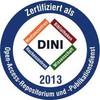Preview |
PDF, English
- main document
Download (16MB) | Terms of use |
Abstract
The endoplasmic reticulum (ER) forms an intricate network of sheets and tubules in eukaryotic cells. It is a highly dynamic organelle and can be remodeled upon demand. The ER for example undergoes extensive morphological changes upon ER stress, a condition caused by the accumulation of misfolded proteins within the ER lumen. Part of this stress-induced remodeling of the ER is mediated by a major ER stress response pathway, the Unfolded Protein Response (UPR). Apart from the UPR-induced ER expansion, membrane contact sites (MCSs) with other organelles are reorganized to maintain vital cellular functions. A machinery that is involved in membrane remodeling at various cellular membranes is the endosomal sorting complex required for transport (ESCRT) machinery. This multi-subunit complex mediates membrane budding, repair and stabilization in different biological contexts. In S. cerevisiae, the ESCRT-III component Snf7 is recruited to specific regions of the ER, which we termed ER clusters, during ER stress. This recruitment requires the ESCRT-associated protein Bro1p. In this study, I set out to determine how the ESCRT machinery is recruited to ER clusters and what role it plays at these sites. To identify proteins involved in this process, I used a proximity-dependent biotinylation approach coupled with mass spectrometry (PDB-MS). I showed that proper recruitment of Snf7 to ER clusters requires two Bro1 domain proteins, Bro1p and Rim20p, and that they act partially redundantly in this recruitment. I further found that the second hydrophobic patch and the TPR-like domain within the Bro1 domain of Bro1p are essential for recruitment of Bro1p and Snf7 to the ER, whereas they are dispensable for ESCRT function at multivesicular bodies (MVBs), highlighting a specific role of these features for stress-induced recruitment to the ER. Furthermore, the hits of the PDB-MS experiment indicated that ER clusters are located at the ER-Golgi interface. I showed that several COPI coat components colocalize with ER clusters and established Cop1p as a suitable Golgi marker at these sites. I discovered that the ER-tether Nvj2p colocalized with Snf7 and Cop1p at ER clusters during stress and contributed to the finding that ESCRT recruitment to ER clusters was essential for the proper localization of another ER-tether, Tcb3p, to these sites. Nvj2p and Tcb3p were shown to play a role in non-vesicular ceramide transfer at stress-induced ER-Golgi contact sites, suggesting that ER clusters represent ER-Golgi contacts. As my findings showed that Nvj2p and Tcb3p were not essential for the establishment of these contacts, they possibly play a downstream role in ceramide transfer. The ESCRT machinery might further be involved in stabilization of these putative stress-induced ER-Golgi contact sites. Taken together, I identified several determinants for ESCRT recruitment to ER clusters during ER stress and defined a novel site of action of the ESCRT machinery at stress-induced ER-Golgi contact sites. My study advances our understanding of the versatile ESCRT machinery, as well as the stress-induced remodeling of the ER in yeast.
| Document type: | Dissertation |
|---|---|
| Supervisor: | Mogk, PD Dr. Axel |
| Place of Publication: | Heidelberg |
| Date of thesis defense: | 26 September 2025 |
| Date Deposited: | 09 Oct 2025 10:23 |
| Date: | 2025 |
| Faculties / Institutes: | The Faculty of Bio Sciences > Dean's Office of the Faculty of Bio Sciences |
| DDC-classification: | 500 Natural sciences and mathematics 570 Life sciences |
| Controlled Keywords: | ER stress, ESCRT machinery, S. cerevisiae, Membrane contact sites, Endoplasmic reticulum |









